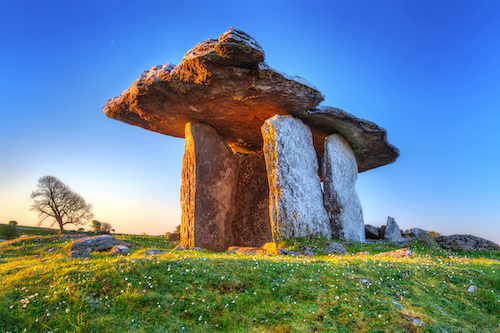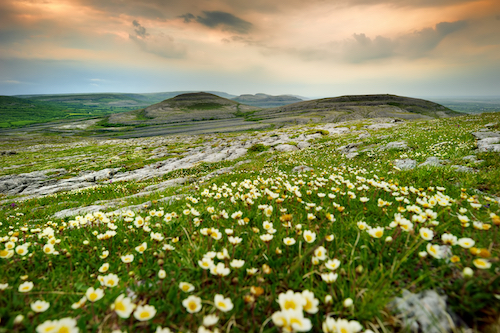Communiqué
A journey through a desert of grey stones in “Wild Ireland: Kingdom of Stone” on NATURE – May 22 at 8pm
< < Back to a-journey-through-a-desert-of-grey-stones-in-wild-ireland-kingdom-of-stone-on-nature-may-22-at-8pmNature—Wild Ireland: Kingdom of Stone
Premieres Wednesday, May 22 at 8pm on PBS
pbs.org/nature, YouTube and the PBS App
Ireland is renowned worldwide for its lush green hills and wild Atlantic coast, but one of its greatestnatural treasures is a landscape of grey stone called the Burren, which is home to some of Ireland’s most enchanting wildlife. Featuring striking wildlife sequences set in this fantastical otherworld, the documentary follows its lead character, the elusive but charming pine marten, as her story takes us on a delightful journey through this incredible habitat and the lives of its wild birds and animals.

Featured Creatures:
• Pine Martens
• Basking Sharks
• Daubenton’s Bat
• Crab Spiders
• Slow Worm
• Three-spined Stickleback
• Jackdaws
• Kestrels
• Marsh Fritillary butterfly
• Fin Whales
• Whooper Swans
Noteworthy Facts & Moments:
• One of Ireland’s greatest national treasures is a grey stone desert called the Burren. From
the Irish word Boireann, meaning “rocky place,” the Burren is characterized by its landscape
of silvery limestone plains and mountains, punctuated by fissures and underground caves.
Many believe this mystical terrain inspired J.R.R. Tolkien’s “Middle-Earth.”
• Pine Martens in Ireland were nearly extinct in the 20th Century. One of the very last places to
find them was in the Burren, but their population has recovered due to legal protection and
conservation efforts.

• Basking sharks are the second biggest fish on the planet, up to 40 feet long and four tons in
weight. They filter 2,000 tons of water an hour through their giant gills to feed on plankton.
Occasionally seen with a companion or two, Basking sharks are usually alone; however
there have recently been mass gatherings spotted on the western edge of Ireland.
Scientists are trying to understand this change of behavior.
• Crab Spiders do not use webs to capture insects but sneak up on their prey to hunt, using
their powerful front legs to hold onto the prey while paralyzing it with a venomous bite.
• Off the coast of the Burren is a group of three islands called the Aran Islands, which contains
21 different kinds of butterflies. Ireland’s rarest butterfly, the Marsh Fritillary, is the only
butterfly in Ireland with legal protection.

